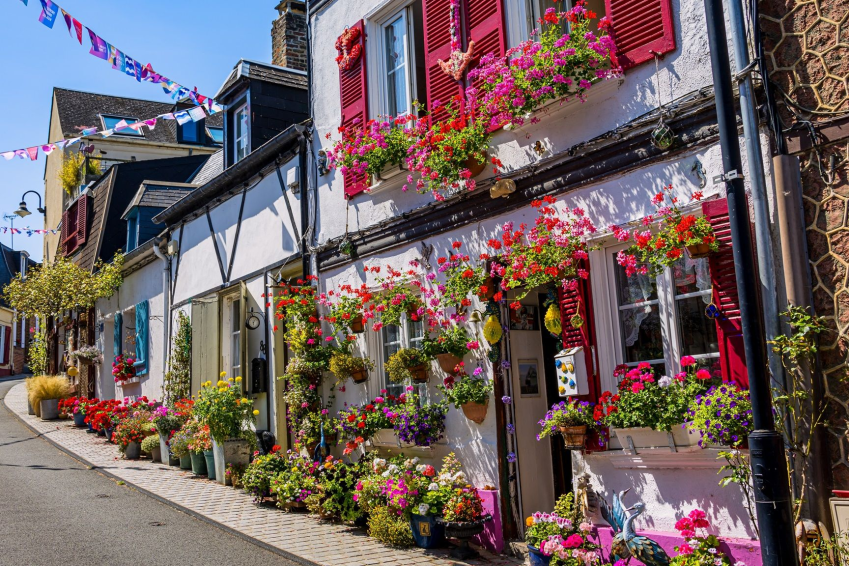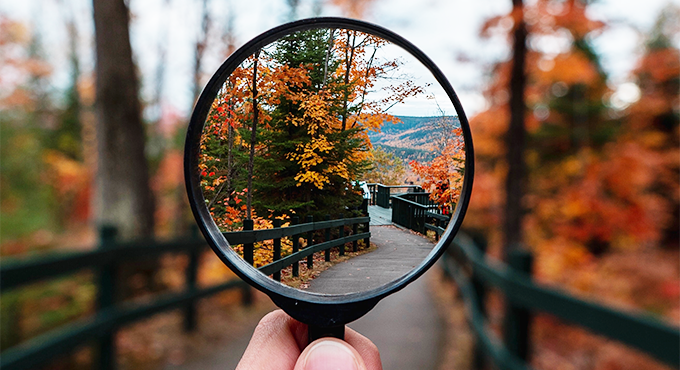News

The “Most beautiful detours in France” to explore off the beaten tracks
When you think about visiting France, you think Paris and the Eiffel tower! To broaden the horizons, the French ministry in charge of tourism has just presented a new edition of the “100 most beautiful detours of France”, leading tourist guide in terms of circulation. In line with this release, a study on the touristic attractiveness of small French cities has been publicly released, and it shows that hiking, discovering the country’s heritage and seeking out gastronomic gems are the main reasons for visiting.
The guide, published and edited by the association of the same name, “Les plus beaux détours de France” (The Most Beautiful Detours in France), highlights small touristic towns “where you are always sure to find an interesting heritage, a traditional and gastronomic identity, quality accommodation and welcome”.
Heritage and tradition in mind
The guide presents towns where it’s good to wander, with full description and a map for each detour, to better help visitors on these “backroads”. In addition to the printed version of the guide, the website of the association also presents most of these detours.
Such detours, which can be spotted with an interactive map of France, are sorted in an index by main themes. Examples in heritage include:
- detours “by little Venice in France”. In the regional natural park of Norman Seine valley, you can explore Pont-Audemer, a city bathed in canals. Further South, in the Centre region, a.k.a. the “Venice of the Gâtinais”, the city of Montargis is irrigated with waters of the Loing river and the Briare canal. And even further South, in the Périgord region, the site of Brantôme, located on a island in the middle of the Dronne, a unique geographical position, is nicknamed the “Venice of the Périgord”.
- a travel along the Nationale 7 road. For decades, the famous National 7 road “ringed in many French homes with the tune of travel for holidays!”, the website recalls. Connecting Paris to the French riviera along 619 miles, the iconic road is “dotted with towns living at the pace of the famous summer crossover between July-goers and August-goers”. Today, if you choose to go off the highways that replaced this route, you can take the Nationale 7 road, which “turned into a second option for un-hurried holidaymakers who still think that the journey is more important than the destination”. The guide provides an itinerary with touristic stops all along the road...
Because heritage is not only made of buildings, the promotion of the intangible cultural heritage also takes an important place in the selection of the Most beautiful detours. In the field of crafts, the guide offers a tour of France of its “know-how that makes its regions so rich”. They include:
- textile arts in the Auvergne–Rhône-Alpes region, with the gorgeous lace of from the Puy-en-Velay, listed by the ministry of culture in the French Intangible Cultural Heritage;
- woodwork, at the heart of a multi-millennia old spruce trees forest in Haut-Jura, in Saint-Claude, a town that became the capital city of pipes manufacturing when tobacco was introduced in France in the 16th century;
- crystal glass-work in Saint-Louis, located a few miles away from Bitche, in the Vosges region, is one of the most beautiful examples of French craftmanship. Born in 1586, it was the first manufacture in France to design lead crystal. Now belonging to the Hermès group, its glass-maker craftsmen still create outstanding items;
- the cradle of porcelain in Limoges, in Saint-Yrieix-la-Perche. This is where a kaolin deposit, an essential ingredient in the production of porcelain, was discovered in the 1760’s. The “white gold”, says the website, became “a manufacture honeypot for the region” which made its reputation worldwide.
Gastronomy and sports for a healthy living
Don’t visit France with an empty belly! The guide also offers gastronomic travels in small towns in France. Out of the routes stopping at the table of chefs selected by the Michelin guide, the Détours en France website provides more affordable but just as tasty stops:
- a discovery of cheese, their history and their recipe secrets. For example, Picodon, a goat’s cheese from the Drôme region, may be consumed both dry and fresh, or the Langres cheese, of concave shape and yellow orangish colour, or the “sweetest of blue cheeses”, the Fourme d’Ambert, which production may date back to Gallo-Roman times!
- cakes, starting with the Madeleine, which, much before Marcel Proust “gave it its letters of nobility”, this little scallop-shaped cake “was already delighting the taste buds of gourmets”, but also other lesser-known pastries such as the Couve, a Provençal cake in the shape of a hen’s nest in which eggs are nestled, or the Gavottes, the Breton crêpes dentelles.
And after tasting cheeses and desserts, you’re up for sport! The “Guide des détours” provides a few ideas to spend your energy (and eliminate the bad stuff):
- “aqua-fun” parks, where you can “slide down a slide, challenge the waves, face the waterfalls”, located all over France, particularly in Provence and Normandy;
- of upper standards, golf courses, in the Paris region, but also one of the most beautiful greens in France with a view of the sea on the Mediterranean coast, or a golf course at the foot of a citadel in Lorraine;
- more down-to-earth are the running courses, “marathon runners, trail fans or simple amateur runners”, with the Crest race in Provence, to climb the 524 steps of the highest dungeon in Europe as quickly as possible, and the Passerelle Trail, a 16.5 miles trail that follows the paths of the Montagne Noire in the Occitanie region and takes participants on a vertiginous crossing of the Mazamet footbridge!
- And of course, halfway between sport and culture, the Road to Compostela. This historic itinerary, which brings together the routes taken in France by pilgrims on their way to Santiago de Compostela, includes several of France’s most beautiful detours: the Via Garona, around Toulouse, the famous Puy-en-Velay route (GR 65) and the Via Domitia (450 kilometres between the Alps and Provence).
These are just some of the ideas for visits suggested by the “Most beautiful detours in France” website. But they’re enough to make you want to set off on your own... Happy detours in France!
Discover more: check out the “Plus beaux détours de France” website, with loads of touristic ideas off the beaten tracks.
What do tourists want to see in small towns?
To back the publication of the guide, the French Ministry also made public a study carried out by the association of the Most Beautiful Detours in France. The study summary, published by the Banque des territoires, a local financing authority, explains than “two-thirds of visitors to small towns are primarily interested in walking”.
The second most popular activity is exploring castles and citadels. Next in line is the appeal of the great religious heritage, cathedrals and famous churches. In fourth place, the study highlights visitors’ interest in local gastronomy and, above all, in cheese! Visits to parks and gardens only come fifth in the list of tourist preferences.
As the Banque des territoires website points out, other attractions for visitors to small towns include tourist trains, patisseries, abbeys, convents and monasteries, archaeological remains, medieval festivals and street arts, river cruises and, last but not least, cycling.
To know more about the study: View the Banque des territoires website (in French)








No comment
Log in to post comment. Log in.